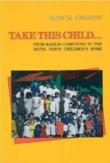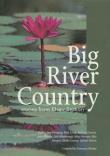AustLit
-
Traditional oral communication is about The Dreaming and passed on from one generation to the next. They help us to understand about the past, present and future. Oral traditions include the use of story telling, song, dance, art and craft making giving instructions and directions, they help to pass on specific cultural practises and values, languages and laws, histories and family relationships. Today, oral histories are expressed in many ways, through visual arts and drama productions, in contemporary songs, poetry, radio or film, mass media, and electronics sources.
-
The Colour of My Skin : Stories by Stolen Generation Survivors, by True Stolen Generations Survivors Group
 Image courtesy of publisher's website.See full AustLit entry
Image courtesy of publisher's website.See full AustLit entryThe Colour of my Skin is a children's book that tells stories from Stolen Generations members in the Albury Wodonga and Woomera area, a group known as the 'True Australian Aboriginal Survivors'.
(...more) -
Take This Child... : From Kahlin Compound to the Retta Dixon Children's Home, compiled by Barbara Cummings
 This image has been sourced from online.See full AustLit entry
This image has been sourced from online.See full AustLit entryThis is a collection of oral histories about the displacement of Aboriginal adults and children from their traditional lands to the Kahlin Compound and the Retta Dixon Children's Home in the Northern Territiory. The children's home was run by the United Inland Mission and was established within the Government compound in 1947 and both areas are referred to today as the Bagot Reserve. The author Barbara Cummings highlights the forced living of Aboriginal people at the compound to the removal of their children to the Retta Dixon home.
(...more) -
 Image courtesy of publisher's website.See full AustLit entry
Image courtesy of publisher's website.See full AustLit entry'The intention of this publication has been to highlight the forced removal of Aboriginal children from their Aboriginal families to be placed in government settlements, missions and children's homes. In this publication Aboriginal people who were removed as children recount personal oral histories of separation from their mothers, fathers, brothers, sisters and extended families. Recounted as well, is the trauma experienced by the parents, who were physically and legally disempowered by the laws and policies which governed all aspects of Aboriginal peoples' lives'.
(...more)Editor's note:
What is clear from the Home's history and the personal stories in this collection is that no Home can ever replace the care and love of a close, supportive family.
-
 This image has been sourced from front cover.See full AustLit entry
This image has been sourced from front cover.See full AustLit entry'This book is a collection of oral histories compiled by Diwurruwurru-jaru at the request of the Katherine Region Stolen Generations Committee...[it] tells the stories from the perspectives of people who were forcibly removed and siblings and children of people who were taken.' (Source: Introduction page 9)
(...more) -
 This image has been sourced from online.See full AustLit entry
This image has been sourced from online.See full AustLit entry'Contains baskets and stories woven by some of the Aboriginal women of Hopevale, Cape York Peninsula, which gives an insight into their lives and crafts - both past and present.' (Source: Fishpond website)
(...more)Contains Dora Deemal's story.
-
 This image has been sourced from online.' Wumun Turi is a collection of stories from Aboriginal women in the Pilbara of Western Australia. Rose Murray has recorded a number of stories that share their history, culture and hopes for the future. The stories are from Aboriginal women of all ages and demonstrate that Pilbara Aboriginal women are survivors, workers and teachers. Wumun Turi is a way of continuing the tradition of storytelling in Aboriginal communities that is being threatened by TV, videos and busy lives.' (Source: Introduction) (...more)See full AustLit entry
This image has been sourced from online.' Wumun Turi is a collection of stories from Aboriginal women in the Pilbara of Western Australia. Rose Murray has recorded a number of stories that share their history, culture and hopes for the future. The stories are from Aboriginal women of all ages and demonstrate that Pilbara Aboriginal women are survivors, workers and teachers. Wumun Turi is a way of continuing the tradition of storytelling in Aboriginal communities that is being threatened by TV, videos and busy lives.' (Source: Introduction) (...more)See full AustLit entryContains an interview with Nyaparu, about her mother's experiences.
-
 This image has been sourced from front coverSee full AustLit entry
This image has been sourced from front coverSee full AustLit entry'Oral histories of the history and culture of the Aboriginal peoples in the Gascoyne region of Western Australia; relationships with pastoralists and the law; treatment of Aboriginal people; alcohol; violent conflict; domestic service; health; Baijungu; Inggarda; Jinigudira; Maia; Mandi, Carnarvon.' (Source: TROVE)
(...more)Includes Mick Dalgetty's 'I Saw Them Do Corroborees'.
-
 This image has been sourced from online.See full AustLit entry
This image has been sourced from online.See full AustLit entry'Elsey Station has long been famous as the setting for We of the Never-Never, Jeannie Gunn's Australian classic of pioneering outback life. In Big River Country, the Elsey is revealed through the words of the country's original inhabitants, the Mangarrayi and Yangman people of the Roper River area...' (Source: back cover)
(...more)Contains Betty Lardy's story of removal, 'Coming Back to Elsey'.
You might be interested in...




